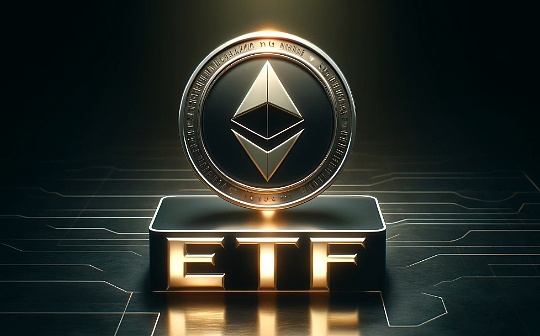
Author: max moleler, cointelegraph; compilation: Tao Zhu, Bitchain vision world
First, understandOptimism
Optimism is a Layer 2 project compatible with Ethereum, hoping to solve the scalability problem of Ethereum, and the function is similar to the Ethereum blockchain.
Optimism is the Ethereum Layer 2 scalabvable solution led by Optimism Collective. Optimism Collection is a vision of an organization composed of a special community to build a fair Internet.The organization covers all branches of Optimism, such as OP LABS, OP Chains, and Optimism Foundation.
The design of the project is similar to Ethereum, providing users with various decentralized applications (DAPP), such as decentralized exchanges and other decentralized finance (DEFI) applications.
Optimism is compatible with Ethereum virtual machine (EVM).This EVM equivalent ensures that Ethereum developers can easily transition when building DAPP within the network.However, the prominent function of the network is Optimism Rollup.
What is o is optimistic rollup?
Optimism Rollup technology is one of the many scalability solutions proposed by Ethereum developers.Their functions are similar to the zero -knowledge Rollup, but they are different in some critical aspects.
Optimism can handle transactions outside the main network by existing as a Layer 2 solution on Ethereum.Processing data from Ethereum main network can reduce congestion, reduce transaction costs and reduce GAS fees.However, the Layer 2 solution requires some ways to cross -layer communication with its parent chain.This is the use of Optimism Rollup.
Many Ethereum scalability solutions today use Optimistic Rollup, which is the method of transferring transactions from Ethereum to its Layer 2 solution.Optimism Rollup involves users in smart contracts compatible with Layer 2 solutions.”Sortor” is a node similar to a verification device on Ethereum, which handles these transactions and take them to a single block.In the end, the sequencer sent the block as a single transaction to the Layer 1 solution, also known as the state commitment.
Optimism Rollup is considered optimistic because all things in Rollup are automatically assumed that it is valid.Lack of verification is a part of the reason for the transaction throughput (the transaction volume per second) is so fast.Verification is one of the key factors for other online transactions.
However, users can question their commitments at any time through the “anti -error” process (previously called “anti -fraud”).If the challenge is successful, the commitment will be deleted from the chain and replaced by another commitment.At present, users have 7 days to question their commitments before they can see it as the final decision.
Although Optimistic Rollup also appears in other scalability solutions, these Rollup is only part of the large software set (called OP Stack).
What is three, what isOP Stack?
The quality of a project depends on its software stack.Optimism is no exception, and the team has a large development goal.
OP Stack is a set of open source, continuous software, and the basis of Optimism.It includes multiple layers, such as governance layers, settlement layers, and derivatives. All layers focus on transaction processing and network development.Ethereum as its consensus layer and transaction execution layer provides a security foundation for Optimism.
Bedrolk is the current iteration of OP Stack, which provides developers with a set of tools to build its own Layer 2 blockchain.The blockchain can use Optimistic Rollup.However, Bedrolk is just the beginning of the Optimism community -driven development goals.
The Optimism organization plans to develop BEDROCK into a super chain.Optimism’s vision of the super chain involves laying the foundation for developers to build its own chain.From there, each blockchain that uses super chain power can accept the same upgrade, build bridges with each other and participate in the same governance -a layer 2 interoperability form.
Theoretically, developers can build a blockchain for any purpose they want on the OP stack of Optimism.The chain can use Ethereum’s security (Optimism’s super chain is based on the network), while developing its expected solutions.By constructing this unified blockchain network, the Optimism team hopes to solve the scalability problem that plagues many blockchain items today.
As of March 2024, the super chain is more concept rather than reality.But Optimism’s developers are optimistic about the future of the project.Of course, if there is no special user team to promote it, development cannot happen.This is where Optimism governance plays a role.
Fourth, how does Optimism governance operate?
Governance is one of the most important parts of any blockchain ecosystem, ensuring correct consideration and implementation of development.
Optimism Collective is managed by two groups: citizen’s home and token home.
Citizen’s house
Citizens ’House is a method for Optimism to provide funds for various projects on its network.It is composed of “citizen”, and they vote for the distribution of funds (RETROPGF) through the project’s traceability.Citizens received their non -alignment token (NFT) to mark their position.These identifiers are also called soul binding tokens and are permanently bound to citizen’s wallets.Soulbound tokens can be verified by the public user base and provides the overall view of citizen network history.
Retropgf receives funds through users in the OP main network.Whenever the sorter is dealt with, some rewards of the sorter will be re -assigned to the PGF.The Citizen Academy then voted to decide which OP items can get this fund.
Token house
Token House is the main governance method of Optimism.The members of the Token House are responsible for submitting a proposal to improve the network and voting.Token House representatives should participate in community meetings, regularly provide project feedback and participate in the reflection period between voting conferences.Participation needs a lot of time, and representatives who do not have enough time to participate can choose to appoint duties.
Representatives will pay attention to the development of the Optimism network as representatives of Token House.They must also participate in forum discussions and vote for governance proposals.Representatives will be rewarded due to the efforts of OP token.
5. What is OP tokens?
OP tokens are the main ways for users to participate in the OPTIMISM network.
OP token is the main way to govern the network and the main way to interact with the Optimism ecosystem.OP tokens abide by Ethereum ERC-20 tokens, which are usually obtained through transactions or airdrops.Users can also earn OP tokens by participating in the network of one of the project governance agencies or processing transactions as sorters.
The total supply of OP tokens at the time of the project was 4,294,967,296.Optimism’s goal is to increase the OP token by 2%each year.
Optimism allocate its tokens in the following ways:

Because OP tokens are a kind of governance tokens, the supply of assets is not limited.The token is also used to participate in the DEFI on the Optimism.
How does Optimism Defi operate?
Decentralized financial channels provide users with a variety of tokens they hold and make profits.Similar to other Layer 2 extension solutions, Optimism provides a variety of decentralized financial applications.Users can use OP tokens to play games, trades in decentralized exchanges, acquire NFT, and invest in other DEFI platforms.
However, users must receive its existing asset bridge on the Optimism network to participate.Fortunately, because Optimism uses Optimism Rollup, they should experience rapid withdrawals.








